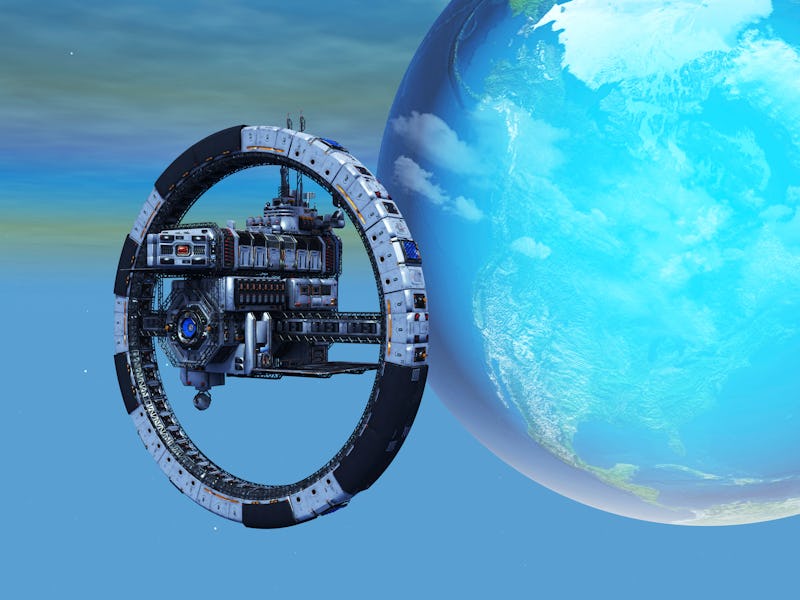Forget alien Voyagers — our first encounter with alien probes could be sleek newer models
Back-of-the-envelope map suggests interstellar probes get faster every year.

If an alien space probe wandered into our Solar System, what would it look like? Assuming anybody’s actually out there, and assuming they happen to send something our way, the first alien probe that reaches us will probably be a highly advanced model, not an early effort like our Voyagers.
And that could have implications for how we interpret Unidentified Aerial Phenomena (the new and marginally more respectful term for UFOs), how we search for signs of extraterrestrial intelligence in our own backyard, and how we plan future interstellar missions, according to University of California, Santa Cruz, astronomer Graeme Smith.
Smith outlines his scenario in a recent paper in the International Journal of Astrobiology.
What’s New — Smith started his study with a simple idea: civilizations that build spacecraft get better at it over time. Over the years, later generations of space probes will probably travel faster than their predecessors. We’ve seen it happen already, or we’re about to. NASA launched the Pioneer 10 spacecraft in 1972. Five years later, it launched Voyager 2, with slightly more advanced propulsion, systems, and instruments. All this time, Voyager 2 has been traveling through space at greater speed, steadily catching up with the older spacecraft. And in April 2023, Voyager 2 will overtake Pioneer 10 as both probes race out into the galaxy beyond our Solar System.
If NASA launched a successor to Voyager sometime in the 2030s (there are no plans to do so), that spacecraft would probably pass both Voyagers in even less time than it took Voyager 2 to pass Pioneer 10. And whatever probes we’re sending out into the universe by the 22nd century will probably leave all our 20th and 21st century efforts in the (interstellar) dust.
But the reverse is also true: any alien version of Pioneer and Voyager that reaches us is likely to be extremely advanced, not a fairly basic first-generation engineering effort. Or as Smith puts it, “If an object sent by an interstellar ETC were to enter the Solar System, chances are it would not be a relic artifact that is perhaps analogous to a time-worn Voyager-like probe, but rather one might expect a vehicle of much greater sophistication, even if it were no longer functioning.”
Gold aluminium cover designed to protect the Voyager 1 and 2 gold-plated records from micrometeorite bombardment. Dated 1978. (Photo by Universal History Archive/Universal Images Group via Getty Images)
Here’s the Background — Decades’ worth of studies have explored the possibility of an alien civilization branching out to settle the galaxy, or at least one corner of it. Dozens of researchers over the years have tried to estimate how quickly a spacefaring alien civilization could expand into new star systems. But Smith was interested in an earlier phase of that process – not crewed colony ships, but uncrewed probes.
After all, if first contact with aliens is ever going to happen, it’s unlikely to involve huge spaceships vaporizing major cities, or even little green astronauts demanding to be taken to our leaders. Instead, Search for Extraterrestrial Intelligence (SETI) researchers will probably spot a radio signal that’s clearly the product of someone sending a message, not just random astrophysics. Researchers could also find an uncrewed probe sent to do — well, pretty much the same things we sent the Voyagers out into the universe to do: collect data and carry proof that we exist.
So it’s well worth thinking about what such a probe might look like, and what we might do with it if we find it.
Why It Matters — All of this — including an impressive amount of calculations for what Smith calls “back-of-the-envelope models” — is pure speculation, of course. But it’s worth keeping in mind for answering two big questions:
First, are any known Unidentified Aerial Phenomena actually alien probes (and if so, how would we tell?) It’s hard to pin down specific answers to that question — or even a consensus on whether the question is worth asking, although NASA seems to think so. But Smith proposes one quick way to evaluate possible UAP sightings: “Are the UAP characteristics so far beyond what terrestrial innovation can currently accomplish as to be consistent with the first arrival of vehicles from a distant extraterrestrial civilization with an interstellar space program?”
And based on his recent study, that particular bar is set pretty high.
First contact probably won’t look much like this.
Second, how should SETI researchers go about looking for alien artifacts, like defunct probes, in our own Solar System? What should they be prepared to find?
“Might a hypothetical first-encounter vehicle from an extraterrestrial civilization be so sophisticated as to still be functioning upon arrival at the Solar System?” writes Smith. “As Hawking and others have drawn attention to, some potential consequences of such a first contact event might be of serious concern for humanity. This is a topic that has again found fruitful soil within the realms of science fiction, but is beyond the context within which the present paper has been framed.”
Meanwhile, the same principle could make things very interesting for any alien civilization that happens to stumble across our robotic explorers.
“It might be surmised from the above examples, that if the Pioneer 11 or Voyager 2 spacecraft ever do arrive within the home system of an extraterrestrial civilization ... they may have been preceded by terrestrial spacecraft of a much more advanced nature,” writes Smith. “In this case, study of either the plaque, or phonograph disc (the Voyager Golden Record), onboard these two spacecraft respectively, may not tell an inquisitive extraterrestrial civilization much that it does not already know about Earth and its inhabitants.”